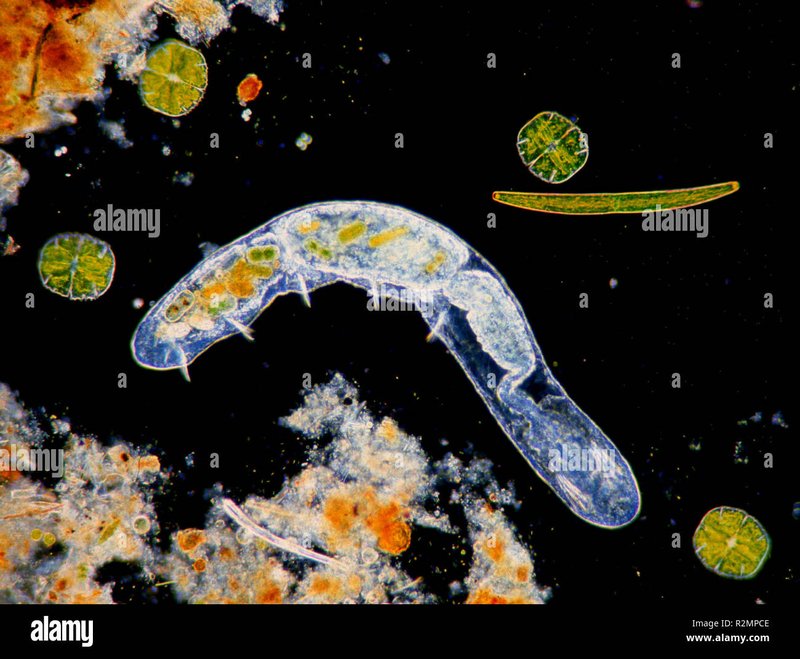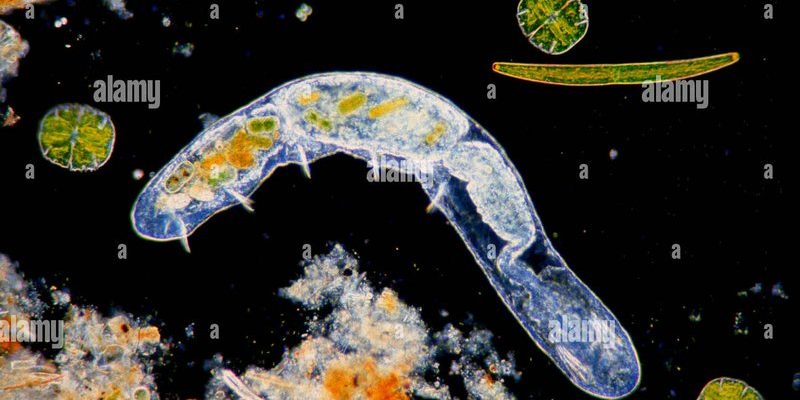
Imagine for a moment that these worms are like the workers in a cafeteria, sorting and recycling food scraps, making sure everything is tidy and functional. They break down organic matter, making nutrients available to plants and other organisms. But oligochaetes don’t work alone; they share their space with a variety of microfauna, including protozoa, nematodes, and even small crustaceans. Understanding how these interactions play out can give us valuable insights into the health of freshwater ecosystems.
What Are Freshwater Oligochaetes?
Before we dive into their interactions, let’s clarify what freshwater oligochaetes really are. These worms belong to the class Oligochaeta and are mostly found in freshwater environments like ponds, lakes, and streams. You can recognize them by their long, cylindrical bodies, which can range from just a few millimeters to several centimeters in length.
Oligochaetes have a few distinct features. They have segments along their bodies, and each segment has tiny bristles called setae, which help them move through the sediment. They can be quite important in the food web, serving as prey for fish and other larger organisms. By eating decaying organic matter and microorganisms, they contribute to nutrient cycling, enriching the water and sediment they inhabit.
If you’re picturing a scene from a science book, try to visualize these worms wriggling through muddy bottoms, tirelessly processing debris. Their actions are a silent but powerful element in maintaining a healthy aquatic environment.
Microfauna: The Ecosystem’s Tiny Players
Now, let’s get to know the other players in this ecosystem—the microfauna. When we talk about microfauna, we’re referring to tiny creatures that live in and around the water. These include protozoa, nematodes, and even miniature crustaceans like water fleas. Each of these organisms plays a specific role, contributing to the overall health and balance of aquatic ecosystems.
Protozoa are single-celled organisms that feed on bacteria and organic matter. Nematodes, or roundworms, can help break down organic material and recycle nutrients. Crustaceans like tiny shrimp or copepods also play a role in this microbial community, providing a food source for larger animals while also participating in the breakdown of organic matter.
Here’s the thing: these little creatures don’t just exist in isolation. Their interactions with oligochaetes create a complex web of relationships that support the entire ecosystem. If one element is out of balance, it can have a ripple effect throughout the community.
How Do Oligochaetes Interact With Microfauna?
So, how do freshwater oligochaetes interact with these microfauna? Picture it as a busy potluck dinner where everyone brings a dish to share. Oligochaetes consume decaying plant material, which might contain various microorganisms. As they feed, they also digest and break down these substances, making it easier for protozoa and nematodes to access the nutrients.
Additionally, the burrowing activity of oligochaetes aerates the sediment, allowing water and oxygen to reach other microorganisms. This creates a lively environment where microfauna can thrive. It’s a bit like stirring a pot: the action helps to blend everything together, promoting more efficient nutrient cycling.
Furthermore, oligochaetes can help control microfauna populations. By consuming certain microorganisms, they can keep populations in check, preventing any one species from overwhelming the ecosystem. This balance is crucial for maintaining biodiversity, which is vital for the health of freshwater habitats.
The Role of Oligochaetes in Nutrient Cycling
Let’s dig a little deeper into the role of oligochaetes in nutrient cycling. Imagine a recycling center, where waste materials get transformed and repurposed. Oligochaetes do a similar job in their ecosystems. As they consume organic matter, they break it down into simpler compounds that are more easily absorbed by plants and other microorganisms.
The waste produced by oligochaetes—often referred to as “casts”—is nutrient-rich. These casts enrich the sediment, providing essential minerals and organic material that can enhance plant growth. You might think of them as little fertilizers spread throughout the ecosystem, supporting the growth of aquatic plants.
This nutrient cycling process also boosts the production of phytoplankton, the microscopic plants that form the base of the aquatic food web. In healthy environments, this can lead to an increase in food availability for higher trophic levels, from small fish to larger predators.
Case Study: Oligochaetes in Lakes and Ponds
To see the impact of oligochaetes in action, let’s consider a specific case study involving lakes and ponds. In various freshwater bodies, researchers have observed the interactions between oligochaetes and other microfauna. In one study, scientists found that lakes rich in oligochaete populations had a healthier diversity of microorganisms.
The presence of oligochaetes was linked to higher levels of organic matter breakdown. This, in turn, supported a more vibrant community of protozoa and nematodes, indicating a well-functioning ecosystem. Essentially, more oligochaetes meant a stronger nutrient cycling process, leading to improved water quality and enhanced habitats for fish and other aquatic life.
These findings emphasize how important it is to maintain healthy populations of oligochaetes in freshwater ecosystems. Their interactions with microfauna aren’t just interesting—they’re essential for the overall health of aquatic environments.
Challenges Facing Oligochaetes and Their Ecosystem
Despite their importance, freshwater oligochaetes face several challenges. Habitat destruction, pollution, and climate change can all impact their populations and interactions with microfauna. When water quality diminishes due to runoff or contaminants, it can disrupt the balance of the entire ecosystem.
For example, if pollutants affect oligochaete health, their ability to recycle nutrients decreases. This can result in a decline in microfauna populations, disrupting the food web and leading to poor water quality. It’s like taking out key players from our potluck dinner—things start to fall apart, and the overall meal suffers.
Moreover, invasive species can further complicate these dynamics. When non-native organisms enter an ecosystem, they can outcompete native species for resources, shifting the delicate balance that has developed over time. This situation can lead to reduced biodiversity and weakened ecosystem functions.
Protecting Freshwater Oligochaetes and Their Roles
To ensure that freshwater oligochaetes continue to thrive, it’s crucial to take action toward protecting their habitats. Here are a few ways we can help:
- Reduce Pollution: Support local initiatives that aim to keep waterways clean. Simple actions like picking up litter and properly disposing of chemicals can make a big difference.
- Preserve Wetlands: Wetlands serve as natural filters and provide critical habitats for oligochaetes and other microfauna. Protecting these areas is vital for ecosystem health.
- Promote Biodiversity: Encourage diverse aquatic life by creating balanced habitats. This can be achieved through responsible landscaping and supporting conservation efforts.
By taking these steps, we can help maintain the delicate balance of freshwater ecosystems and ensure the ongoing interactions between oligochaetes and microfauna.
In the end, the interactions between freshwater oligochaetes and other microfauna create a tapestry of life beneath the water’s surface. Their relationships are essential for nutrient cycling, ecosystem balance, and overall health. Understanding these tiny creatures and their roles can lead to better conservation efforts, promoting not just their survival but the well-being of entire aquatic communities. So, the next time you think about a pond or lake, remember this hidden world and the vital work that oligochaetes do every day.

